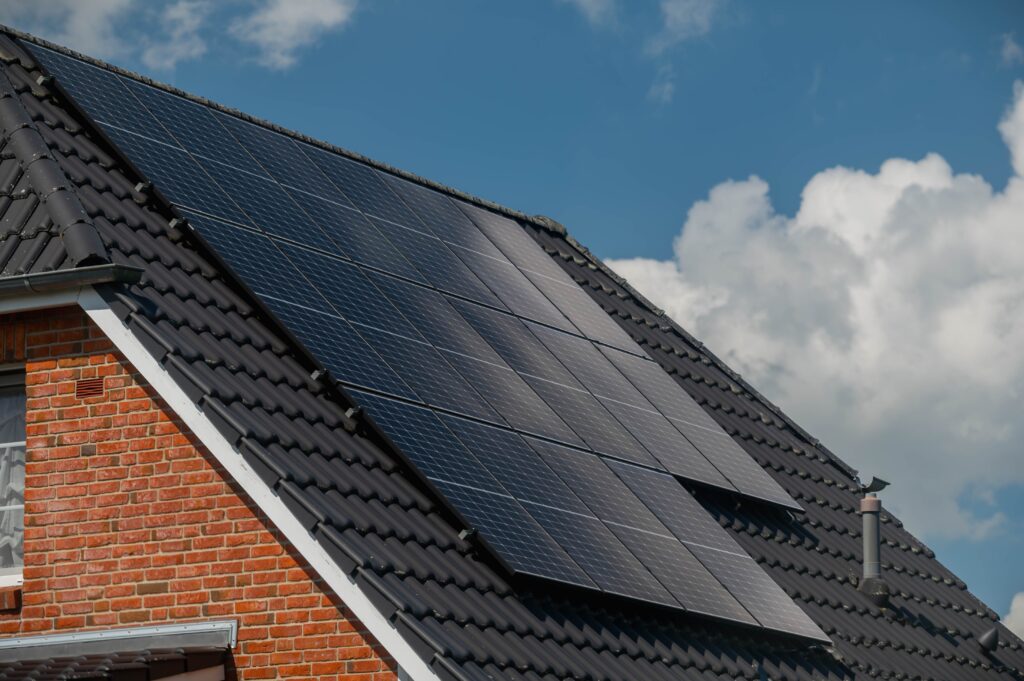What Is Net Metering? A Complete Guide for Homeowners with Solar

If you’re considering solar panels or already have them on your roof, you’ve probably heard of net metering. It’s one of the key attributes of having solar power that can make it more financially attractive — but what is it, how exactly does it work, and what do you need to know to take full advantage of it?
This guide breaks down net metering in simple terms, explains how it benefits homeowners, and explores how programs vary depending on where you live.
Table of Contents
What Is Net Metering?
Net metering (also called net energy metering or NEM) is a billing mechanism that credits solar energy system owners for the electricity they add to the grid.
Here’s the simple version:
- When your solar panels produce more energy than your home is using, the excess goes back to the power grid.
- Your utility company gives you a credit for that extra electricity.
- Later, when your solar panels aren’t producing enough energy — like at night or on cloudy days — you can use those credits to offset the electricity you draw from the grid.
The result? Your electric bill only reflects your net usage — what you took from the grid minus what you gave back. Hence the name: net metering.
Why Net Metering Matters for Homeowners
Net metering can significantly reduce your utility bills and improve the return on investment (ROI) of your solar system. In some areas, it’s the primary way homeowners save money with solar.
Here’s how it helps:
- Maximizes savings: You’re not just producing energy — you’re banking credits on your overage for future use.
- Balances production: Solar panels often overproduce during the day and underproduce at night. Net metering helps smooth out that mismatch.
- Shortens payback period: By lowering your electricity bills, net metering can help you recoup the cost of your solar installation faster.
- Reduces waste: Excess energy isn’t wasted — it supports your community’s power grid.
How Net Metering Works on Your Bill
As an example, let’s say your home uses 1,000 kilowatt-hours (kWh) of electricity in a month.
If your solar system generated 800 kWh during that same time:
- You would only be charged for the 200 kWh difference.
- If you had generated more than 1,000 kWh, your bill could show a credit, depending on your utility’s rules and regulations.
Some utilities let you carry these credits forward for future months. Others may pay you for excess production — though often at a lower “wholesale” rate, not the retail rate you pay when buying electricity.
Different Types of Net Metering
Net metering policies are not the same everywhere. In fact, this is one of the most state- and utility-dependent aspects of going solar. Common variations include:
1. Full Retail Net Metering
You get credited at the same rate you pay for electricity — a one-to-one exchange. This is the most homeowner-friendly version and was long the standard in many states.
2. Time-of-Use (TOU) Net Metering
Rates vary depending on the time of day. Producing during peak hours might earn you more credit, while using power during high-demand times might cost more.
3. Net Billing
Instead of a credit, you’re paid for excess electricity at a set rate, which is usually lower than what you pay to buy electricity.
4. Buy-All, Sell-All
You don’t use your solar power directly — instead, you sell all your production to the grid and buy all your usage from the utility. This is currently a less common practice, and typically less beneficial for homeowners.
State-by-State Differences
Net metering policies can vary dramatically across the U.S. For example:
- California recently shifted from its original full-retail NEM program to a version that compensates new solar users less generously (called NEM 3.0), sparking debate about the future of solar affordability in the state.
- Arizona, Nevada, and Hawaii have also moved away from full retail net metering in recent years.
- Other states like New York, Massachusetts, and Oregon still offer strong programs that support solar adoption.
Some of these policies are even unique to city or region. Before you install solar panels, it’s crucial to check your local utility’s rules and your state’s policies. A good solar installer should walk you through this, and it’s wise to consult with more than one to verify what you’re hearing. In the long run, consult with your state and local authorities on policies, as it helps to do your own homework, too.
Does Net Metering Affect the Size of My Solar System?
Yes — because net metering allows you to offset your full electric bill, many homeowners design their system to cover 100% (or close to 100%) of their energy needs.
However, in areas without full net metering, it might make more sense to install a slightly smaller system, or to pair your solar with a battery storage system to maximize self-consumption.
Is Net Metering Going Away?
Not exactly — but it is evolving. As solar becomes more widespread, utilities and regulators are rethinking how to balance fair compensation for solar users with the cost of maintaining the electric grid.
That’s why we’re seeing transitions to time-of-use rates or reduced compensation in some states. While net metering remains a valuable incentive, it’s smart to keep an eye on changing regulations.
Bottom Line: What It Means for You
Net metering is one of the most important policies that supports the growth of residential solar. It helps you:
- Save money on energy bills
- Get better value from your solar investment
- Support a cleaner, more efficient energy grid
But the rules are ever-changing — and where you live plays a big role in how beneficial net metering can be. Always work with a knowledgeable solar provider who understands the local landscape, and consult with more than one to confirm what you are told. It also helps to stay engaged in your state and local community’s energy decisions.
Thinking about solar? Understanding net metering is step one. The more you know, the better you can plan for a smarter, more energy-independent future.








